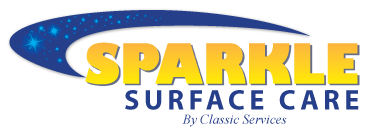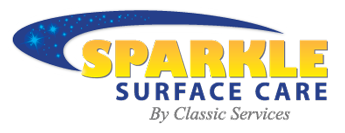Hardwood Floor Care
CARE GUIDE
Proper care of your hardwood floors will not only keep them looking great, it will maximize their life. Here are some essential care tips.
Hardwood Floor Care | SPARKLE Surface Care | South Jersey, NJ
How To Tell If Your Hardwood Floors Need Professional Help, And Questions To Ask and Myths to Dispel About Hardwood Floor Care Options
Hardwood Floor Problems That Require a Pro:
- Does the floor look dull, lack finish, dingy, smeary, or cloudy?
- Are there patches of lighter wood appearing either under area rugs or where they once were? Or patches in front of windows that experience strong or direct sun?
- Do your traffic lanes seem dull, worn, or thin? Is there blackness in the grain where the finish has worn off?
- Where the raw wood is exposed (i.e. points of entry) can you see evidence of moisture from the outside grounds?
- Do you have small patches of finish that has peeled, like a sunburn?
- Do you see scratches from bar stools, chairs, or from dragging furniture across the hardwood?
- Do you have splinters, holes, soft mushy damaged areas or “sponge-like” or sink when you stand on them?
- Do you know if you have had bug infestation that has burrowed in the wood causing an appearance change?
- Does your nail, running across the scratch “stop” and get stuck in the scratch?
- Are there indentations or “divots” where the wood has depressed as a result of something being drug across it?
- Does the hardwood show pet nail scratch damage, either larger scratches from bigger pets or finite scratches from smaller pets (depressions but not through the finish)?
- Do you see light green, yellow or dark marks (dark explained below)?
- Do you have white, cloudy or black areas where water sources can affect the wood (i.e. dishwashers, sinks, bathrooms, near windows, doors)?
- Are there round black pet spots under area rugs or black spots where house plants are located?
- Have you had water damage?
- are the boards cupped- a condition where the boards may have swelled, appearing higher in the middle of the board, so your foot trips up as you rub it across the board surfaces (each board in the affected area may do this), where they look swollen and too big for area they are installed in to.
- are the board ends warped, curled or distorted?
- are the boards buckling, and pulling away from the subfloor?
- Is there a definite “smeariness” to the floor, perhaps a sticky residue that is noisy when you walk across the floor with your shoe?
- Are there tiny round divots, the size of a pencil eraser randomly all over the floors, particularly in traffic lanes?
- Do you have a waffle-like spongy residue left from a pad that decomposed under your area rug, black marks near the tack-less strips once a carpet is torn out? Or is the finish once the carpet has been removed appear to be thin, or missing?
Any of these above-mentioned scenarios are considered problems, damage, residues or oxidation requiring professional attention. While a few of them may be handled by a DIY effort, most need skilled craftsmen with specialized equipment, not even a handyman or general contractor is equipped to do. And to correct most of these problems be prepared for a sanding & refinishing project.
Most Problems, even in isolated areas cannot be corrected within the area, the procedures must be expanded to include the entire surface, in and through not only the room affected, but expanded to include other rooms which all run into one another. At best, you can isolate the work if there is a “natural break” say from 1 board to the next if transitions or wood in other rooms run diagonally, or something is done to create “natural breaks’.
Isn’t There Something You Can Do To Just “Buff It Up A Little Bit”?
Regretfully, rarely is there a solution where we can just buff it up a little bit. Nine 1/2 times out of 10 the answer is plain & simply NO! Buffing of floors as a solution is almost never appropriate because of the way floors are finished, as opposed as to how they were finished years ago. Today’s floors have a surface finish, usually a Polyurethane. The buffing of paste wax is not compatible for a Polyurethane Finished Floor, where the coat lays on top of the wood. Buffing wax is only suitable where the finish absorbs into the wood, so wax on top of a completely sealed surface does absolutely nothing.Can’t You Just Fix The Problem Area? For My Polyurethane Finished Floors
Again, that would be most likely not. Boards fixed & finished, patches, or areas will look absolutely different from the remainder of the floor. First off wood over time changes color, so the chances of staining to match are extremely difficult. Any time you spot apply to finish it will look different from the surrounding floor- so much so it will look like paint spots on an older painted surface, or will look like a shiny patch compared to the overall floor.
The correct procedure is to do the spot repairs, then sand the floor down, so it is all uniform, then stain, seal & finish it all together to achieve a continuous uniform finish. An exception to this might be if you have extra boards or other boards (say from in a closet) that you can insert to replace the damaged ones. Hopefully, the damage does not cross diagonally involving several boards. Also, hopefully, the donor board is close in color and finish appearance that it will blend in and be less noticeable than the damaged boards.
Tips As You Settle In With Your New Floors
Now That Your Hardwood Has Been Restored

Coming Soon! Download our free Hardwood Floors Care Guide. It’s a great resource full of tips and info. You will want to keep it handy.
- Do not reset any area rugs for 30 days
- Do not use any cleaners for a period of 2-3 weeks, including water
- Limit traffic to stocking feet or an inside shoe. No bare foot traffic for about a week
- Never use popular oil soaps, nor wax, acrylic, polish or carnauba shine restoring products
- Do NOT use steamer type mops on your wood floors- hot steam will violate or blow the finish & cause a’milky’ mess, that will have to be corrected
- Protect your floors for about 3 weeks if you have large dogs over 50 lbs, or highly energized dogs over 12 lbs (we recommend Ramboard, a breathable dense cardboat layer
- We recommend a Bona™ style micro-fiber dust mop or vacuum with a soft bristle or wand with a felt protected shoe
- We recommend Squeaky™ Floor Cleaner, by Basic Coatings which we stock & can get you. It is best to avoid shine restoring products, some of which can limit what we can offer next time you need a little TLC. (some can adversely affect the finish)
- Minimize street shoe traffic, socks, inside shoes or booties better (at first, but not a bad idea on an on-going basis)
- Do not wear hi heels as a habit, they will dimple & damage floor resulting in the need to sand & refinish
- Avoid rolling wheels- toys, suitcases, etc
- Get in the habit of lifting, not dragging chairs, stools, etc
- Place protectors under feet of furniture- use felt ones with good adhesive, or rubber cup styled ones, inspect often
- If direct sun affects your wood, which we corrected, you may want to consider window treatments or window tinting
- Use exterior track off mats at entry points, after 30 days place them inside as well. Wipe feet- “6 lefts & 6 rights” to rid sand, dirt & soils
- Clean up any water spills, pet urine, plant water or major spills asap
- If you experience water damage on your wood contact us so we can assist you in avoiding cupping damage (distortion of the wood)
- Mostly we use Dura Seal Quick Coat™ Stains (a short lived odor), and Poly Whey™, a natural based coating system. They don’t any nasty VOC issues. There is little smell, perhaps of baking. Very, very rarely a mild smell may become accentuated, near pilot lighted appliances, but is of no harm.







